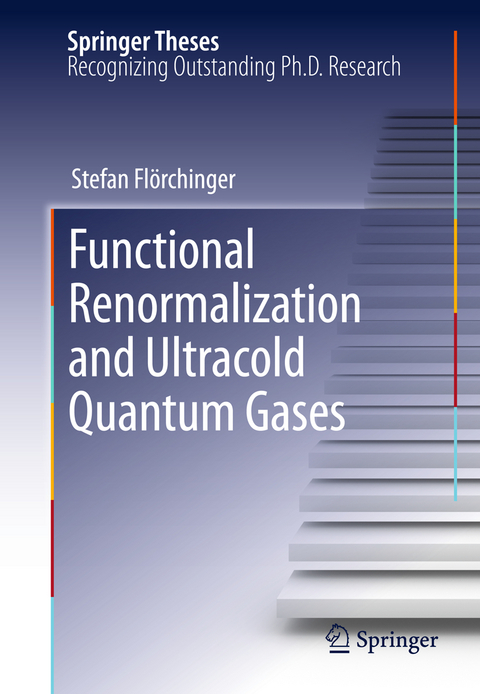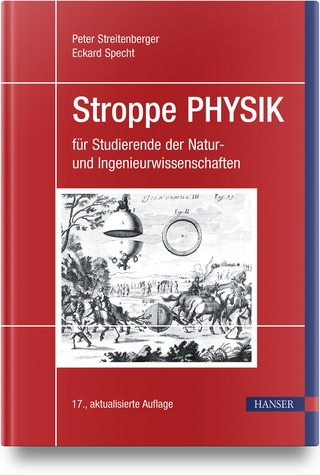
Functional Renormalization and Ultracold Quantum Gases
Seiten
2012
Springer Berlin (Verlag)
978-3-642-26502-0 (ISBN)
Springer Berlin (Verlag)
978-3-642-26502-0 (ISBN)
Here, modern techniques from quantum field theory are applied to the description of ultracold quantum gases, enabling a unified description of numerous phenomena including superfluidity for bosons and fermions and classical and quantum phase transitions.
Modern techniques from quantum field theory are applied in this work to the description of ultracold quantum gases. This leads to a unified description of many phenomena including superfluidity for bosons and fermions, classical and quantum phase transitions, different dimensions, thermodynamic properties and few-body phenomena as bound state formation or the Efimov effect. The non-perturbative treatment with renormalization group flow equations can account for all known limiting cases by solving one single equation. It improves previous results quantitatively and brings qualitatively new insights. As an example, new quantum phase transitions are found for fermions with three spin states. Ultracold atomic gases can be seen as an interesting model for features of high energy physics and for condensed matter theory. The research reported in this thesis helps to solve the difficult complexity problem in modern theoretical physics.
Modern techniques from quantum field theory are applied in this work to the description of ultracold quantum gases. This leads to a unified description of many phenomena including superfluidity for bosons and fermions, classical and quantum phase transitions, different dimensions, thermodynamic properties and few-body phenomena as bound state formation or the Efimov effect. The non-perturbative treatment with renormalization group flow equations can account for all known limiting cases by solving one single equation. It improves previous results quantitatively and brings qualitatively new insights. As an example, new quantum phase transitions are found for fermions with three spin states. Ultracold atomic gases can be seen as an interesting model for features of high energy physics and for condensed matter theory. The research reported in this thesis helps to solve the difficult complexity problem in modern theoretical physics.
The Wetterich Equation.- Generalized Flow Equation.- Truncations.- Cutoff Choices.- Investigated Models.- Symmetries.- Truncated Flow Equations.- Few-Body Physics.- Many-Body Physics.- Conclusions.- Appendices.
| Erscheint lt. Verlag | 5.11.2012 |
|---|---|
| Reihe/Serie | Springer Theses |
| Zusatzinfo | X, 202 p. 58 illus. |
| Verlagsort | Berlin |
| Sprache | englisch |
| Maße | 155 x 235 mm |
| Gewicht | 332 g |
| Themenwelt | Naturwissenschaften ► Physik / Astronomie ► Allgemeines / Lexika |
| Naturwissenschaften ► Physik / Astronomie ► Quantenphysik | |
| Naturwissenschaften ► Physik / Astronomie ► Theoretische Physik | |
| Naturwissenschaften ► Physik / Astronomie ► Thermodynamik | |
| Schlagworte | BCS-BEC Crossover • Efimov Effect • functional renormalization group • Non-Relativistic Quantum Field Theory • Renormalization Group • Superfluidity • theoretical physics • Ultra Cold Quantum Gases |
| ISBN-10 | 3-642-26502-2 / 3642265022 |
| ISBN-13 | 978-3-642-26502-0 / 9783642265020 |
| Zustand | Neuware |
| Informationen gemäß Produktsicherheitsverordnung (GPSR) | |
| Haben Sie eine Frage zum Produkt? |
Mehr entdecken
aus dem Bereich
aus dem Bereich
für Studierende der Natur- und Ingenieurwissenschaften
Buch | Hardcover (2023)
Hanser (Verlag)
CHF 55,95
Band 1: Mechanik und Thermodynamik
Buch | Softcover (2022)
Wiley-VCH (Verlag)
CHF 55,85


